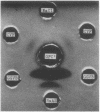Abstract
The studies presented here indicate that activation of the complement (C′) system by a foreign protein will cause membrane injury and passive lysis of unsensitized erythrocytes present at the time of the reaction. These observations suggest that in addition to the classical antibody-C′-induced cytolysis, there are alternative pathways or mechanisms for activation and participation of the terminal C′ components in the production of cell membrane injury.
We have shown that a substance derived from cobra venom and eluted from a single protein band on polyacrylamide can promote lysis of unsensitized autologous or heterologous erythrocytes in the presence of fresh guinea pig serum and that this lysis-inducing activity and C′-inhibiting activity appear to reside in the same fractions. The lytic activity is prevented by several agents known to impair classical C′3 activity, but is unaffected by certain procedures which interfere with the function of C′ components C′1 and C′2, a suggestion that this reaction involves chiefly C′3-C′9. Further, the cobra venom (CV) factor depletes C′ activity in cobra serum, and the CV factor (with its 5S serum cofactor) converts purified C′3 to its inactive form,1 indicating that the reaction of this complex with the complement system occurs without participation of antibody. Therefore, since the lysis-inducing and C′-inhibiting activity of the CV factor appear to result from similar interactions with the complement system, these observations suggest that cell membrane damage and cell lysis can be accomplished through activation of the complement system by a mechanism involving little or no participation of classical antibody or C′ components C′1, 4, or 2.
Full text
PDF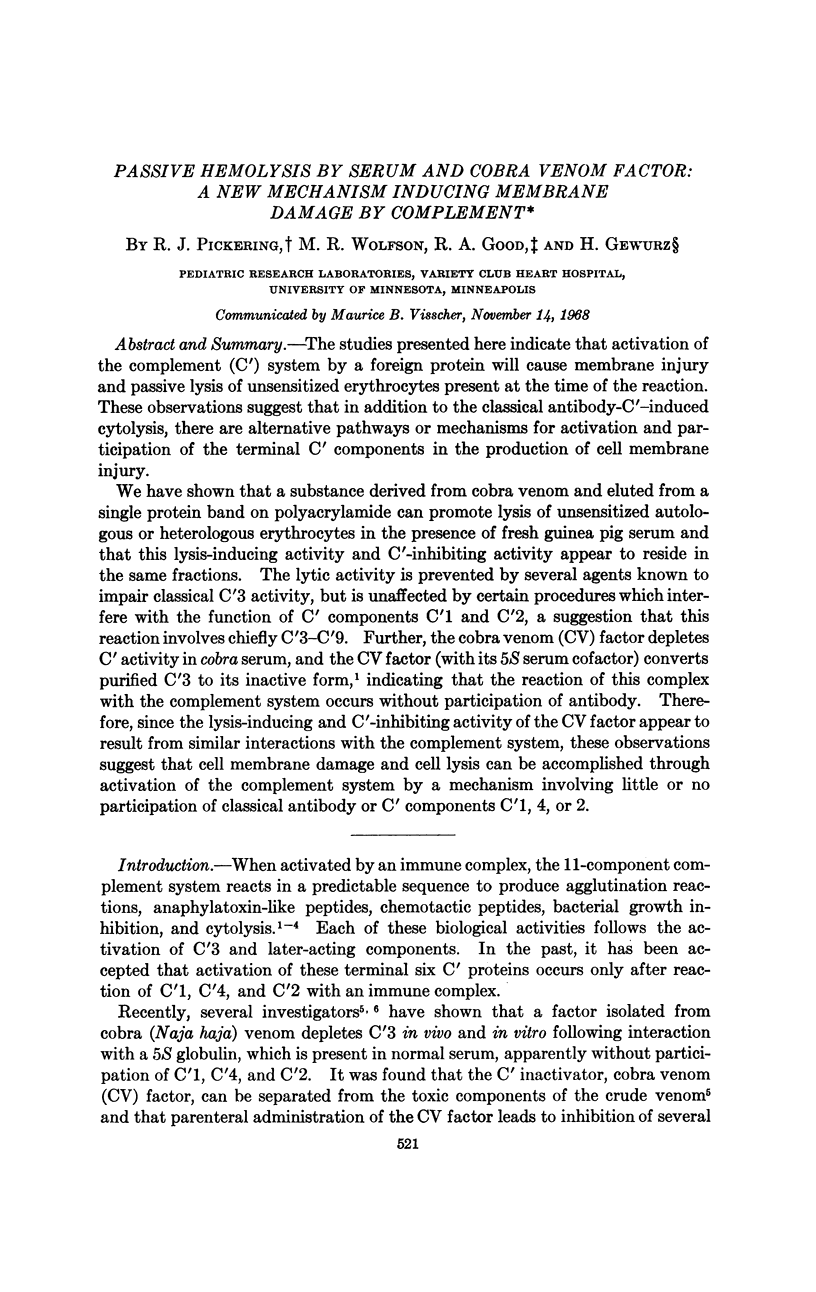
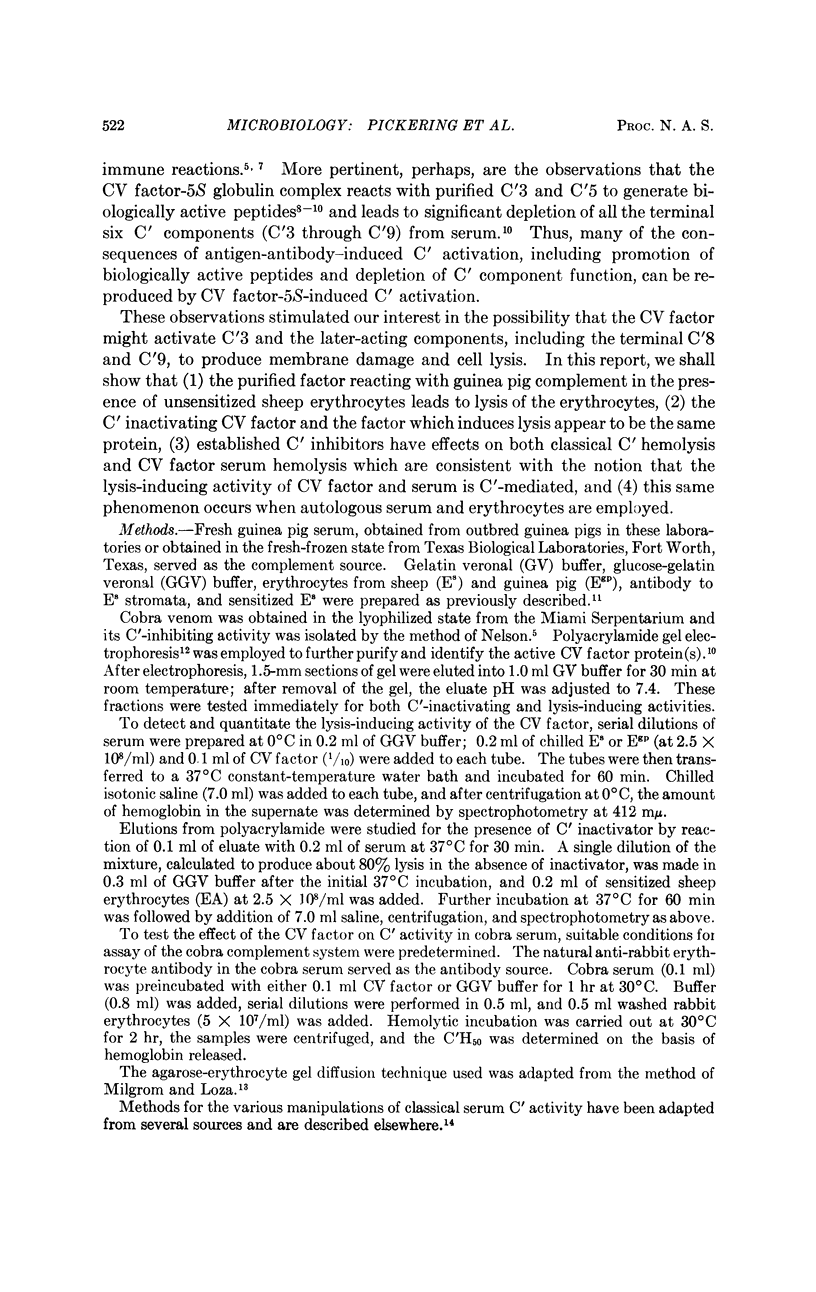
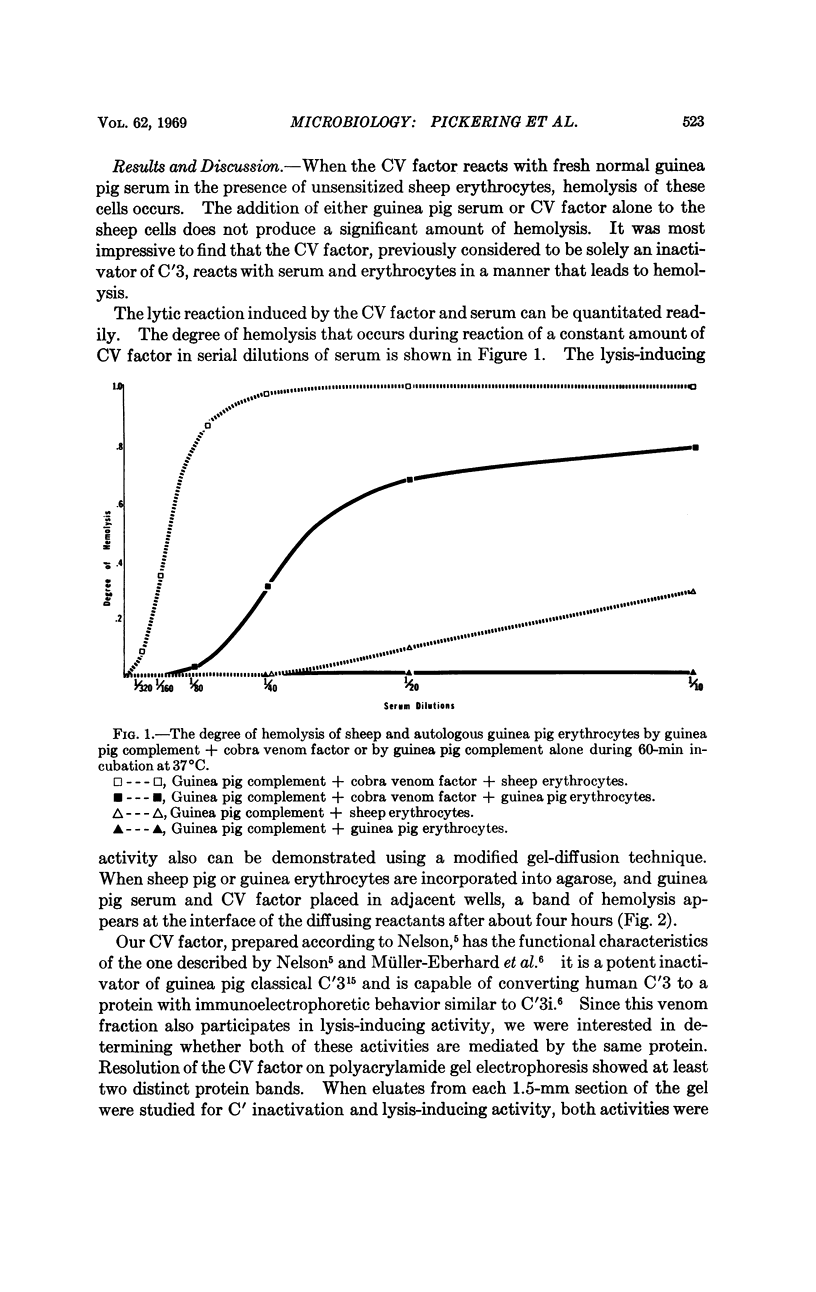
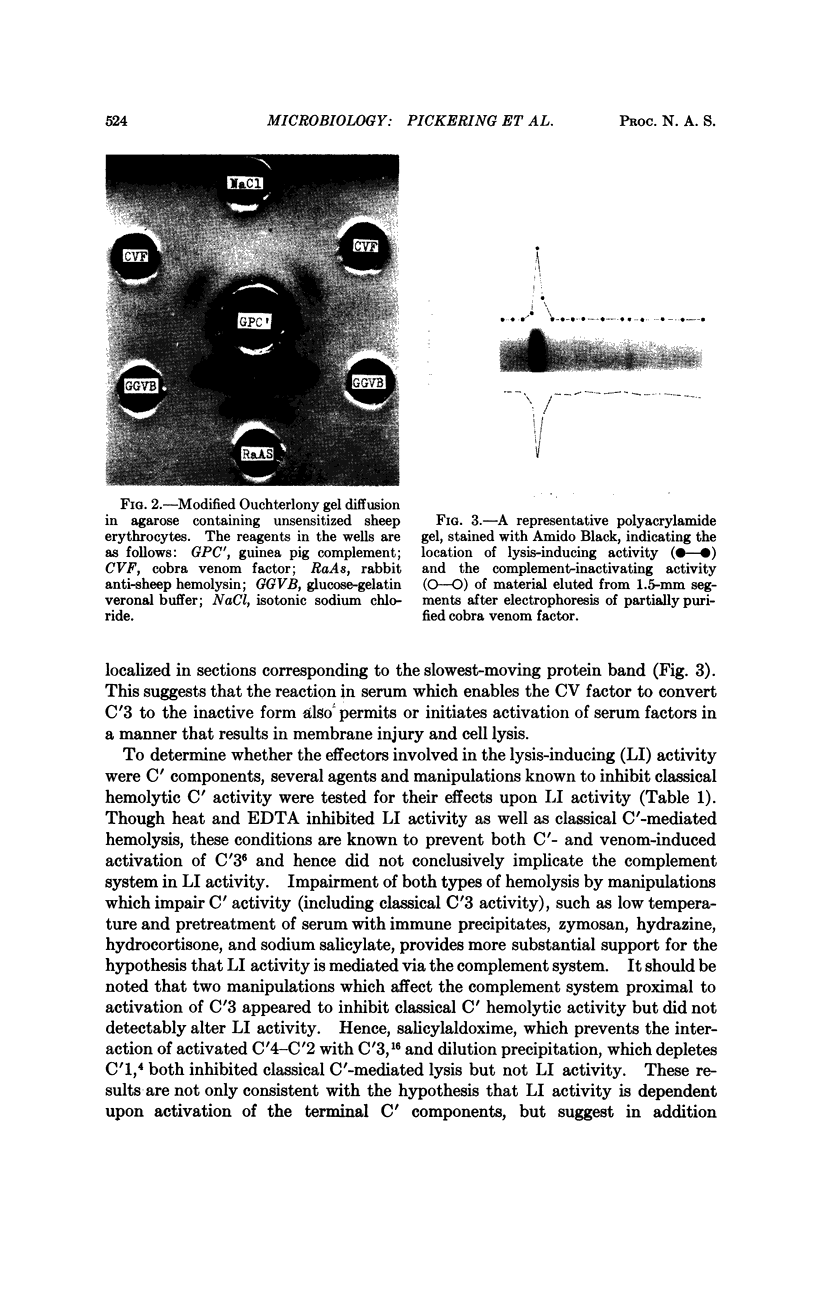
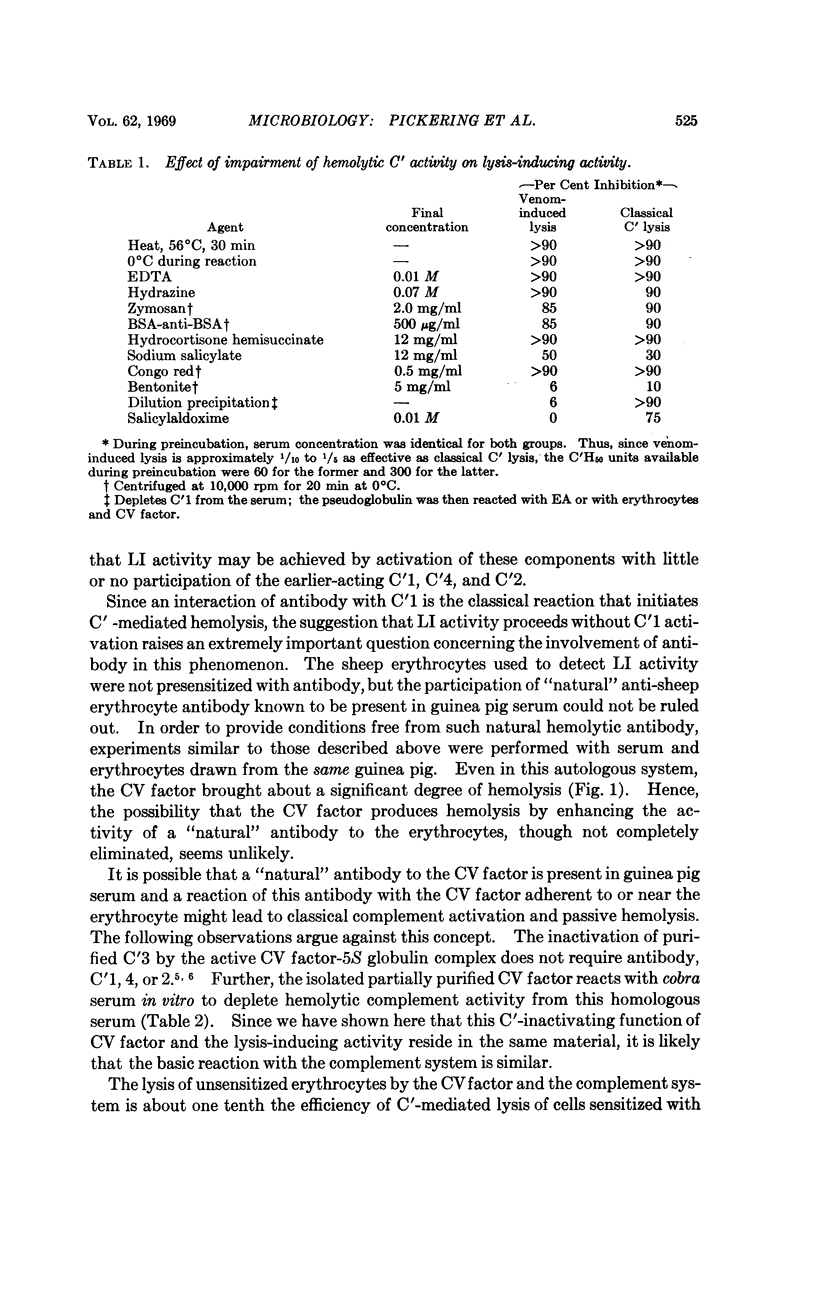
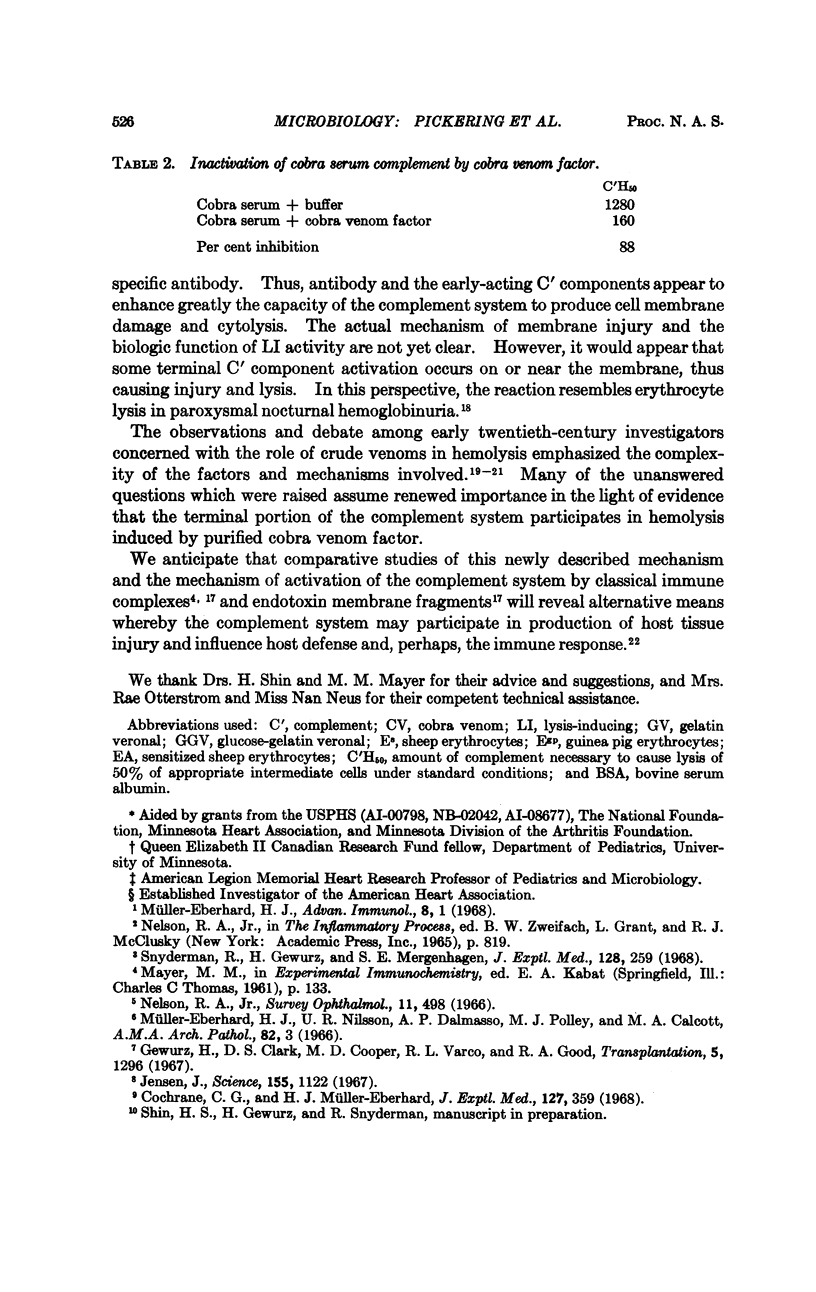
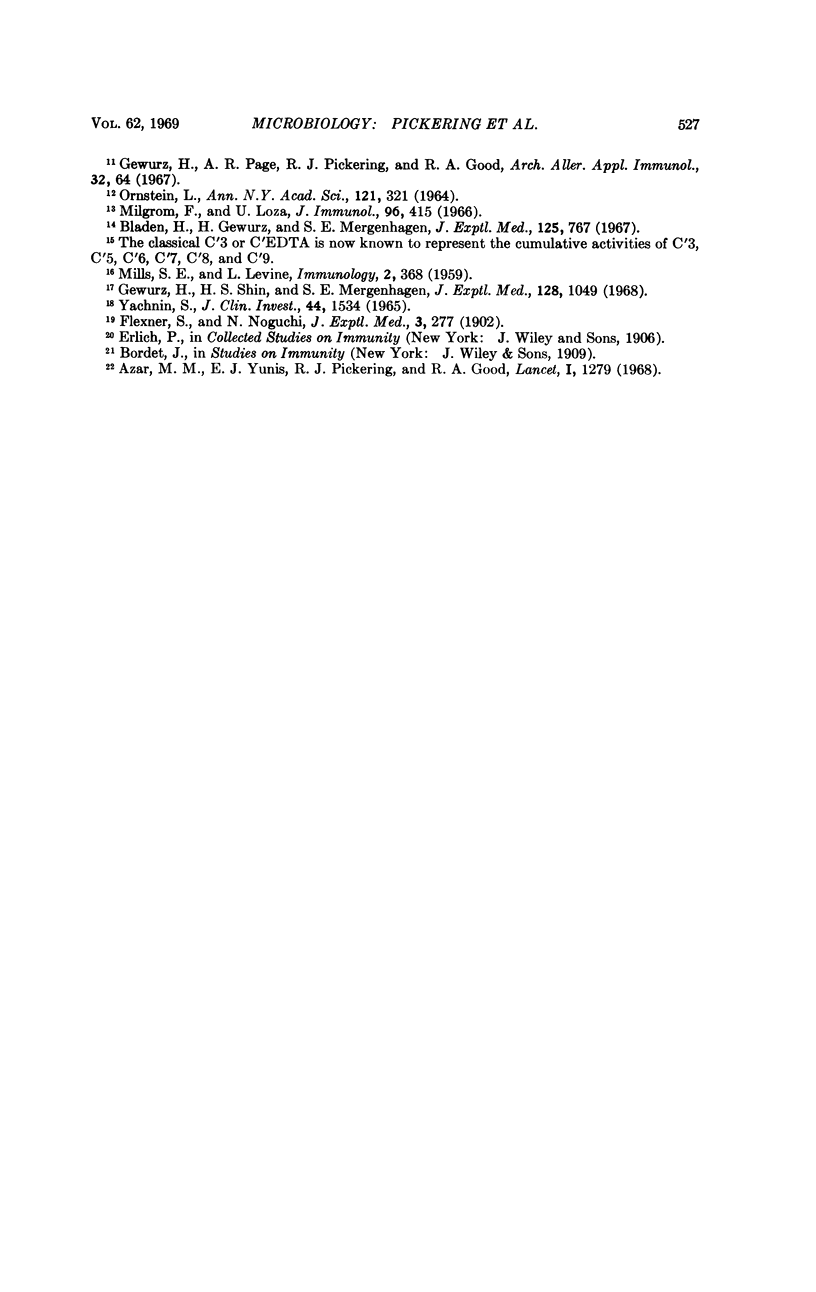
Images in this article
Selected References
These references are in PubMed. This may not be the complete list of references from this article.
- Azar M. M., Yunis E. J., Pickering P. J., Good R. A. On the nature of immunological tolerance. Lancet. 1968 Jun 15;1(7555):1279–1281. doi: 10.1016/s0140-6736(68)92293-9. [DOI] [PubMed] [Google Scholar]
- Bladen H. A., Gewurz H., Mergenhagen S. E. Interactions of the complement system with the surface and endotoxic lipopolysaccharide of Veillonella alcalescens. J Exp Med. 1967 May 1;125(5):767–786. doi: 10.1084/jem.125.5.767. [DOI] [PMC free article] [PubMed] [Google Scholar]
- Gewurz H., Clark D. S., Cooper M. D., Varco R. L., Good R. A. Effect of cobra venom-induced inhibition of complement activity on allograft and xenograft rejection reactions. Transplantation. 1967 Sep 5;5(5):1296–1303. doi: 10.1097/00007890-196709000-00008. [DOI] [PubMed] [Google Scholar]
- Gewurz H., Shin H. S., Mergenhagen S. E. Interactions of the complement system with endotoxic lipopolysaccharide: consumption of each of the six terminal complement components. J Exp Med. 1968 Nov 1;128(5):1049–1057. doi: 10.1084/jem.128.5.1049. [DOI] [PMC free article] [PubMed] [Google Scholar]
- Jensen J. Anaphylatoxin in its relation to the complement system. Science. 1967 Mar 3;155(3766):1122–1123. doi: 10.1126/science.155.3766.1122. [DOI] [PubMed] [Google Scholar]
- MILLS S. E., LEVINE L. The inhibition of immune haemolysis by salicylaldoxime. Immunology. 1959 Oct;2:368–383. [PMC free article] [PubMed] [Google Scholar]
- Milgrom F., Loza U. Complement-mediated hemolysis in agar gel. J Immunol. 1966 Mar;96(3):415–423. [PubMed] [Google Scholar]
- Müller-Eberhard H. J. Chemistry and reaction mechanisms of complement. Adv Immunol. 1968;8:1–80. doi: 10.1016/s0065-2776(08)60464-2. [DOI] [PubMed] [Google Scholar]
- Nelson R. A., Jr A new concept of immunosuppression in hypersensitivity reactions and in transplantation immunity. Surv Ophthalmol. 1966 Aug;11(4):498–505. [PubMed] [Google Scholar]
- ORNSTEIN L. DISC ELECTROPHORESIS. I. BACKGROUND AND THEORY. Ann N Y Acad Sci. 1964 Dec 28;121:321–349. doi: 10.1111/j.1749-6632.1964.tb14207.x. [DOI] [PubMed] [Google Scholar]
- Snyderman R., Gewurz H., Mergenhagen S. E. Interactions of the complement system with endotoxic lipopolysaccharide. Generation of a factor chemotactic for polymorphonuclear leukocytes. J Exp Med. 1968 Aug 1;128(2):259–275. doi: 10.1084/jem.128.2.259. [DOI] [PMC free article] [PubMed] [Google Scholar]
- YACHNIN S. THE HEMOLYSIS OF RED CELLS FROM PATIENTS WITH PAROXYSMAL NOCTURNAL HEMOGLOBINURIA BY PARTIALLY PURIFIED SUB-COMPONENTS OF THE THIRD COMPLEMENT COMPONENT. J Clin Invest. 1965 Sep;44:1534–1546. doi: 10.1172/JCI105260. [DOI] [PMC free article] [PubMed] [Google Scholar]



